If you happen to suffer from taphophilia, you will recognize the lure of cemeteries. Herein lies local history, tales of heroism and tragedy. In the residue of everyday life the social distinctions are still visible - monumental memorials to the self-importan, funeral plots separated from the masses by railings and the modest headstones recording names and dates, the timescale that was a life. It was in this way that I met the Kingswell family.
Newtown Isle of Wight
A perfect View of History
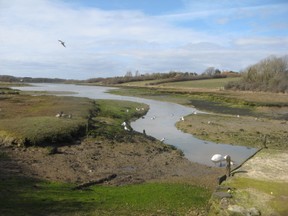
Newtown hides among the tributaries along the estuary of its river. It nestles among the reeds and marshes, the peace disturbed only by the squabbling of gulls or the mournful cry of the curlew. It is a place to go to find calm and to experience a sense of what country life was like for many centuries.
Newtown has no pub, no shop and no bus service. Unlike many Island villages there has been no building, not a bungalow estate or apartment block in sight. Some sense of its past importance can be inferred from the street names - Gold Street, Silver Street. In Medieval times it had aspirations to be important, as also suggested by the presence of its late 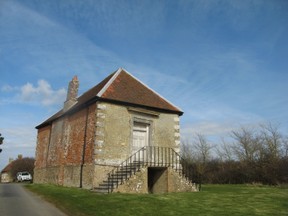 17th century Town Hall, paid for by public subscription.
17th century Town Hall, paid for by public subscription.
Church of the Holy Spirit Newtown
The population of Newtown in the 19th century was less than 70 but in 1836 it was decided to erect this sizable village church. Three years earlier the village had been dis-enfanchised because until the Reform Act became law, it routinely sent two MPs to Westminster.
The church has some interesting features, a lovely round stained glass window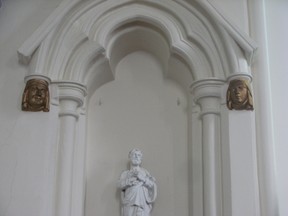
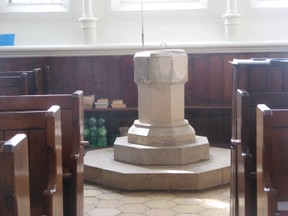 , elegant arches,
, elegant arches,
.
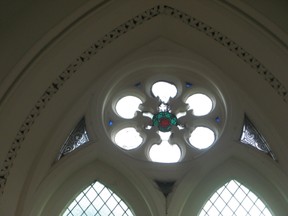 a stone font and some attractive embellishments. A few plaques record the faithful service of its parishioners. It is outside however that attracted my attention.
a stone font and some attractive embellishments. A few plaques record the faithful service of its parishioners. It is outside however that attracted my attention.
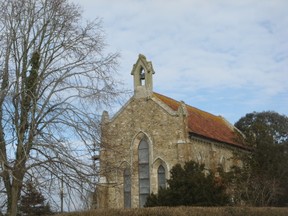
The Graveyard
Meet the Kingswell Family
Close to the side of the church a long line of identical tombstones records the passing of 16 members of the Kingswell family. One immediately feels that there is something unusual, but they would not have chosen to be singled out in this way. I set to work to piece together their story.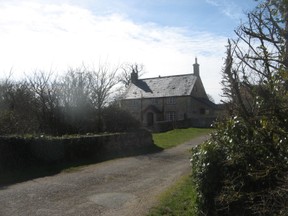 .
.
In 1862 Mary Jane Jolliffe married John Alford Kingswell. She was twenty and he was twenty-three and they settled down to married life in Fleetways Farmhouse, a substantial but modest house in Newtown. Soon enough, along came the children.
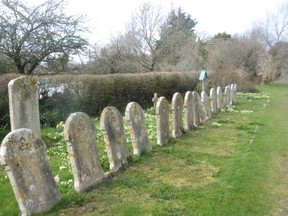
The Kingswell Family
In 1862 their first born son James arrived. A year later he was joined by Martha Augusta Annie then three years passed before Beatrice Leonara Amelia joined them. In 1872, Mahala Louise May put in appearance to be followed a year later by Mary Maria Frances and thereafter Florence Mary, George Alford, Aimee Kate, Emma Agnes Marguerite, Robert Alford and Selina Elia - eleven healthy children.
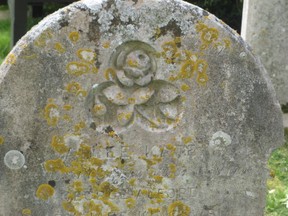
A family of this size was not, of course unusual in Victorian times but unhappily, in 1886 things started to go tragically wrong for on January 26, 19 year old Beatrice died. Her headstone bore the loving words:
NO MORE WE SEE HER IN OUR HOME
NO MORE HER VOICE WE HEAR
FOR DEATH HATH BEEN AND STOLE AWAY
THE ONE WE LOVE SO DEAR
As the months passed, sadness for the loss of Beatrice was joined by anxiety over the welfare of four more Kingswell daughters and in January 1888, Aimee joined her sister in the cemetery. Her headstone bore the words:
HER BODY ONCE OUR TENDER CARE
NOW LIES BENEATH THE SOD.
HER SPIRIT THAT CAN NEVER DIE
IS SAFE AT HOME WITH GOD
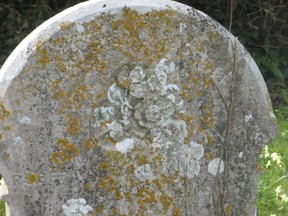
Nine months later, Martha was laid to rest:
NOT IN ANGER NOT IN WRATH
THE REAPER CAME THAT DAY
AN ANGEL VISITED THE HEARTH
AND TOOK OUT FLOWER AWAY
Florence aged 15 3/4 died on May 12 1889 to be joined by Mahala, aged 19 on December 1st. Both girls had their own epitaphs lovingly inscribed.
So what stole away their lives? One might guess that it was that 19th century scourge tuberculosis. The family were farmers. Did the girls, perhaps charged with milking and caring for the cows catch this horrible disease from their close proximity with the animals?
Happily, the other children survived although both James and Robert did not live to be fifty. By this time however, their parents were in their turn laid to rest in the churchyard along with their daughters.
One must wonder about Mary Jane, mother of this brood. Was it she who chose her daughters' romantic, sometimes exotic forenames? Was it she who composed the verses for her lost babies? Standing in that churchyard contemplating the row of modest headstones, for a brief moment one is in another world.
*With acknowledgements to the Isle of Wight Family History Society for having recorded the epitaphs.
You might also like
Grief and BereavementThere will be some point in everyone's life where we will have to deal with t...
Why Shouldn't We Speak Ill of the Dead?When somebody dies, there is a tendency to talk only about the good that they...
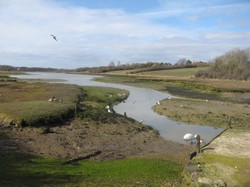



 Snooker Dooperon 04/28/2019
Snooker Dooperon 04/28/2019
 The Isle of Wight - as seen through Windowson 08/10/2017
The Isle of Wight - as seen through Windowson 08/10/2017
 Turning the Mattresson 10/27/2015
Turning the Mattresson 10/27/2015
 The Last Voyage of the Mirabitaon 08/24/2015
The Last Voyage of the Mirabitaon 08/24/2015
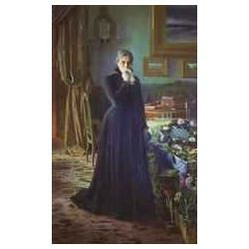
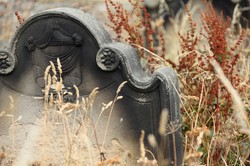
Comments
Reminds me of Cooling, in Kent, near the marshes (Great Expectations).
Very atmospheric.
I've never looked at graveyards like this before Jan, you've given me a new perspective on social class as seen through tombstones: not to mention a new word 'taphophilia' which sent me to the dictionary!